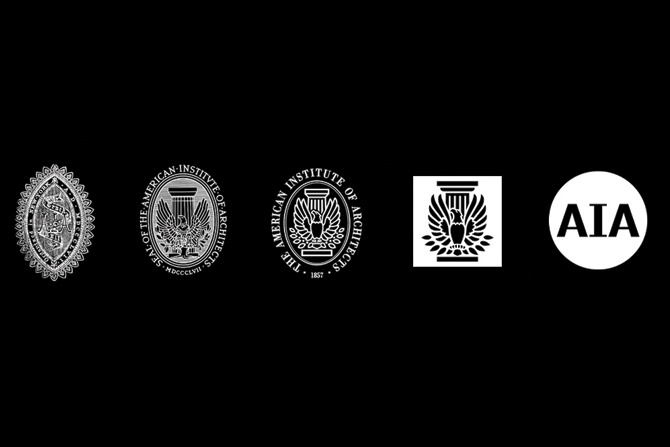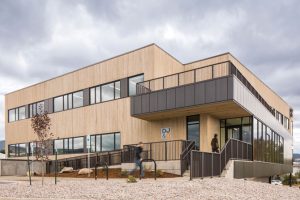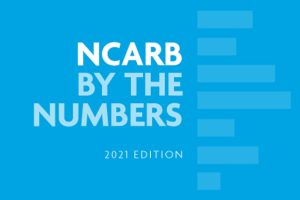The Montana Chapter of the American Institute of Architects celebrates 100 years of continuous operation this year. The Chapter received its charter from the AIA on June 4, 1921, with seven members: J. G. Link, Fred Willson, George Carsley, A.V. McIver, George Shanley, W.R. Plew, and Chandler C. Cohagen. The primary purpose in those early years was a social organization where members and their families would gather at either Yellowstone or Glacier National Parks for a week of vacation and camaraderie. These same individuals played a key role in the enactment by the Montana State Legislature of the Architectural License Law signed by Governor S.V. Stewart on Feb. 28, 1917.
The young Chapter stressed the meaning of ethics, the need for strict professional behavior, appointed an “Educational and Publicity” committee, adopted Chapter bylaws and slowly grew the membership to nine by 1929. The depression completely obliterated the practice of architecture, and Chapter meetings dispensed from 1932 to 1935. Dues remained at $5 per year from 1921 to 1948, when they raised to $15 per year! Angus Vaughn “A.V.” McIver was the first Montana AIA member to advance to Fellows status in 1948.
The Chapter matured during the 1950s, becoming much more active in politics at state and local levels, encouraging and supporting the School of Architecture at Montana State University. Four general membership meetings were held per year, and a brochure titled “Architectural Services” was developed. During these years, Chapter members would meet with state leaders to negotiate recommended fee schedules for public projects. The Chapter was moved from the Western Region to the Northwest Region in 1952.
As the Institute expanded programs during the 1960s and 1970s, so did the Chapter. In 1967, they hired their first Executive Secretary, Thomas Judge; he resigned in 1972 to become Governor of Montana. Also during this time, the Chapter promoted the use and sale of AIA Contract Documents and did extensive networking with other organizations in the building industry such as engineers, surveyors, contractors, code agencies, etc. The Chapter hosted the NW Regional meeting in 1965 and 1975. And in 1973, the Chapter ceased negotiating a fee schedule with the State of Montana for public projects.
During the 1980s, the Chapter responded to requests from its membership. Fewer general membership meetings were held with the business of the Chapter being conducted by the Executive Board made up of Chapter officers and three directors. The general membership gathered twice a year to concentrate on educational seminars such as “Computer-Aided Design” (1982); “Problem Seeking: An Architectural Programming”; “Architectural Photography Workshop”; etc. Elections were conducted by mail. To celebrate Montana’s centennial, the Chapter put together a “Ghost Town” exhibit that toured the state for two years.
The Chapter faced many challenges in the 1990s and the early 2000s, as did all member organizations. The attitude of members had migrated from “what can I do for the organization” to “what is the organization doing for me.” In response, the Executive Board tried pushing more duties and responsibilities down to the local sections so members could be more involved, which was met with mixed success. The Chapter continued to be active at both the local and state levels of government by defending, refining and protecting “Quality Based Selection” of design professionals for public projects and kept insurance requirements in check. And, the Chapter’s first website went live in September 1999.
The Chapter worked closely with the MSU School of Architecture, providing scholarships for students, program support, and creating an endowment. The Chapter encouraged members to serve on local, county and state boards, focused on producing one strong fall conference each year, and again hosted the NW Regional Conference in 1993 and 2004. The Chapter celebrated good design by promoting the Design Awards Excellent program on a primarily annual schedule.
The Chapter’s membership continued to grow steadily in the new century and weathered the financial downturn of 2009 with only a slight drop. The annual Fall Conference has grown from a single-day format, attended by 50 to 75 members, to a two to two-and-a-half-day format, attended by 175 to 200 members. The Chapter’s website underwent a dramatic and successful redesign in 2014. The Chapter routinely funded travel for officers to Grassroots, Regional and National Meetings.
Numerous members of the Chapter have served as directors of the NW Pacific Region, as SGN Representatives, as Architect Licensing Advisors and on national committees. The Chapter continues to support the MSU School of Architecture, students and their AIAS Chapter with scholarships, a fully funded endowment, underwriting of students to attend the annual Fall Conference and a willingness to be available when needed. Many members of the Chapter have served on the Montana Architects Licensing Board, and the Chapter continues to be a source of information for different agencies within Montana. The Chapter has arranged for lobbying services during Legislative Sessions since 1973, has published a quarterly newsletter since 1996, and a full-color annual magazine called ‘The Montana Architect’ since 2009.
The now 400 or so members of the Montana Chapter of the American Institute of Architects have much to be proud of and see that there is more to do in the future to promote the professional architect. The world needs the architecture environment – and those who build it – now, more than ever. The Chapter is diverse, forward-thinking, and ready to meet the next 50 years!










